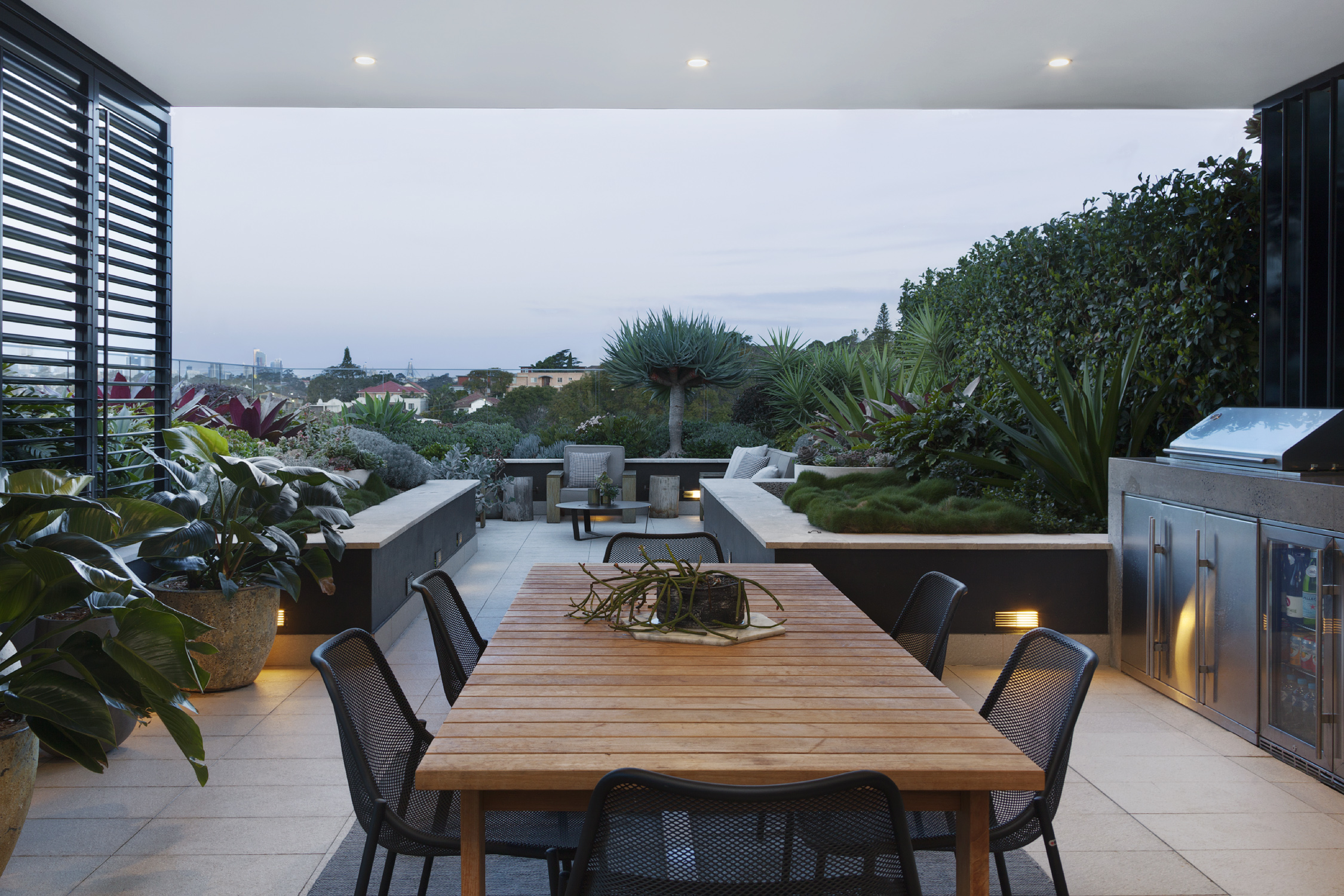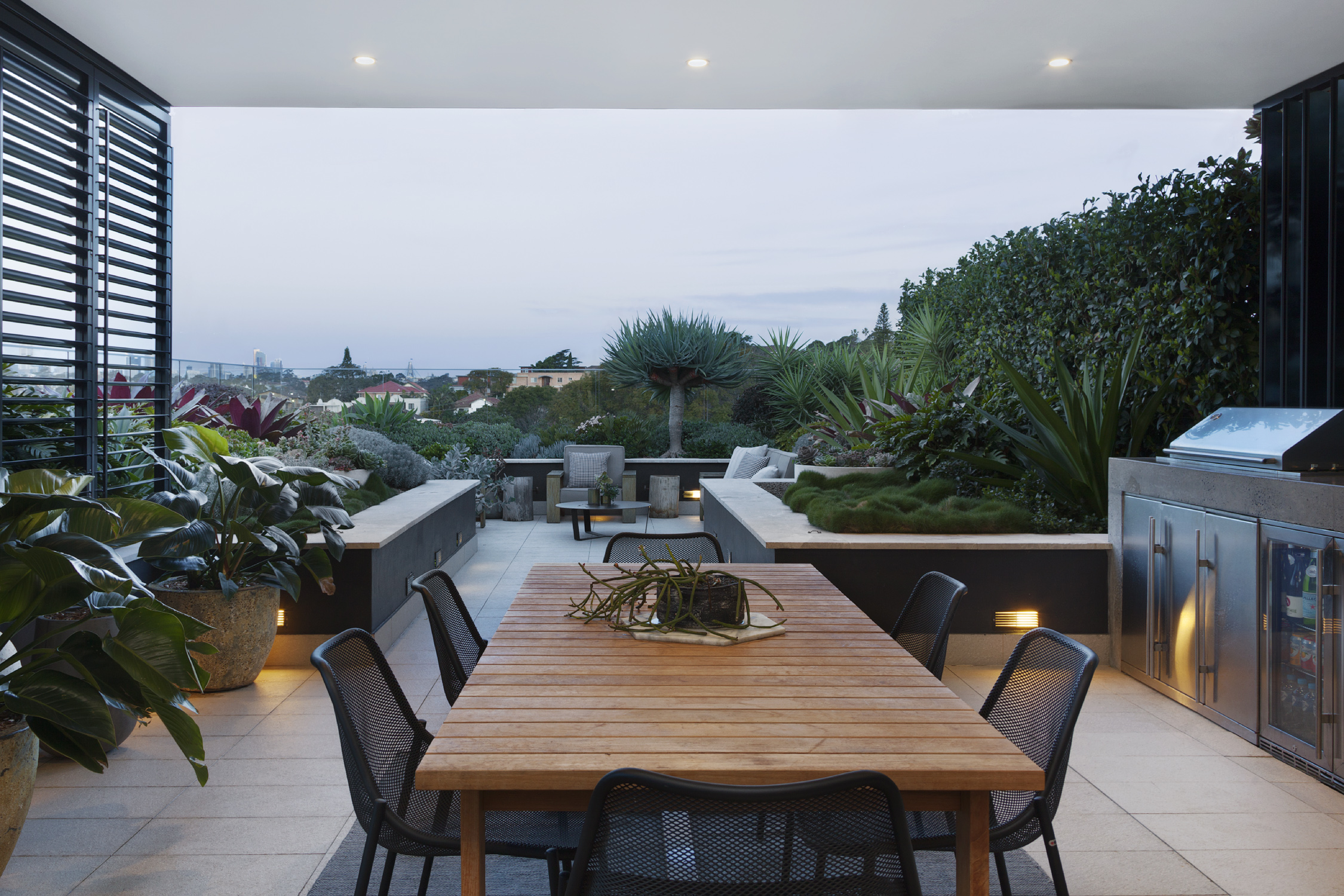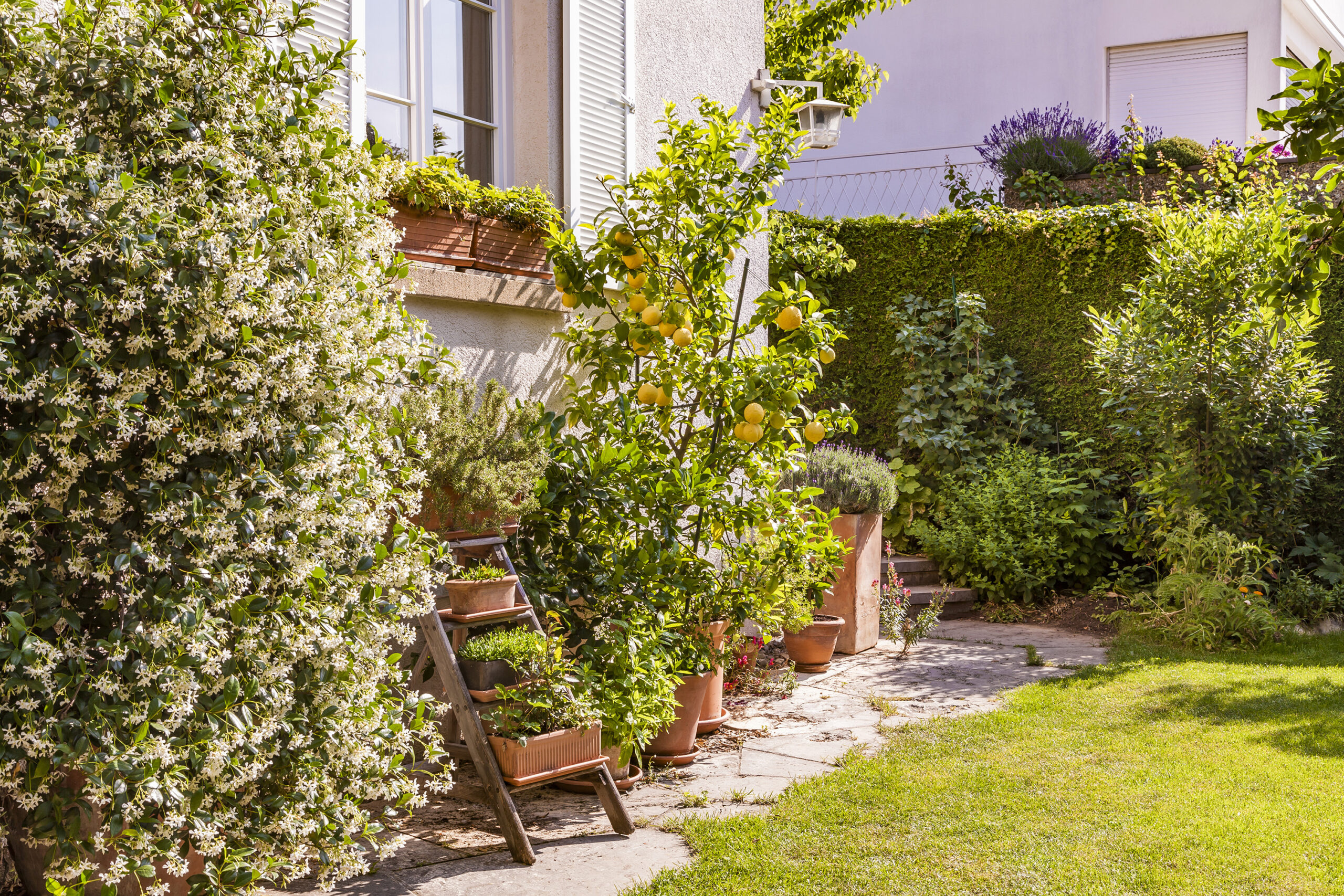Outdoor renovation guide

The outdoor room is a long-term trend in Australia, so it’s important to not overlook the power of a back garden or front yard when renovating. Discover how to create an outdoor living space, including green spaces, landscaping, outdoor dining and seating options, and the front facade. Outdoor spaces can be costly so budgeting is key to getting a space that works for you.

Costs>
Design elements>
Utilising space>
Plant selection>
Outdoor kitchens>
Mistakes>
Costs
Depending on the scope or works and the size of your space, it can cost anywhere from $2000 to $20,000 to improve the outside of your property. This will depend on whether you need to paint the house externally and how much garden there is. If you’re thinking of a pool as well, this could cost up to $100,000.
How much does it cost to redo a backyard?
The sky is the limit when it comes to a backyard makeover but for a basic job – using soil, plants, and mulch – ideally you would have around $5000 to play with. The secret to a budget backyard is plenty of research, careful planning, and buying well-suited young plants that thrive once planted. To get more bang for your buck avoid buying plants and materials from major hardware stores or expensive nurseries. Instead, buy seedling stock from online nurseries, get bulk soil delivered and get grass seed rather than turf.
Don’t forget to factor in long-term equipment costs, for example, a lawn mower to keep your grass looking neat once it takes hold. Another factor to plan for is potential tree removal. It’s a good idea to get any older trees checked for rot and disease by bringing in an arborist before you start. A report may set you back a few hundred dollars plus there could be removal costs if necessary. Finally, if you are within a bushfire prone area it is also key to research tips on how to design your garden with low fuel loads and defendable spaces.
How much does it cost to remodel a patio?
Patios come in all different shapes, sizes, and designs, so cost will depend on the design, materials used, as well as the earthworks required. But it’s safe to say you will need at least $20,000 to build a decent outdoor area. Consider whether you’d prefer concrete, timber, outdoor tiles, natural stone, or brick. Decks are generally more expensive and require more ongoing maintenance, but they also add more value. Natural tiles are also on the expensive side but create a comfortable vibe.
A roof is also a great addition for protection against the elements but are expensive so many people instead opt for retractable shades. Even if the space is small or the structure is standalone you will be required to meet any relevant council standards, so do your homework. Also, think about whether you will need electricity and plumbing for ceiling fans, lights, outdoor appliances, and sinks.
How much does it cost to add an outdoor kitchen?
Kitchens don’t come cheap even if they are outside, so a budget of $10,000 minimum is ideal but expect to spend several times that if you want a schmick setup. Consider whether you want a custom design with all the features built in or prefabricated off the shelf products to save in cost. Before you even start thinking materials and appliances, remember that you will need to budget for building design, council permits and approvals, as well as plumbing and electrical connections and a patio to build on.
Design elements
Outdoor spaces have the power to make or break a house. Before making any decisions spend time in your yard noting where the sun is and how you use the space.
Once you’ve done some research here are the main elements to consider in your design.
Keep in the style of your home and interiors: Your garden should be an extension of your home, so the spaces need to seamlessly blend and feel connected.
Focus on creating a relaxed vibe: Outdoor spaces should be about relaxing, enjoying nature and enjoying life with entertaining spaces.
Go natural: Where possible use natural materials. This will ensure your spaces stand the test of time and work well with their surroundings.
Consider an alfresco area: From fire pits to dining areas and an outdoor kitchen, there are so many ideas for creating your very own oasis.
What about a pool?: If your budget allows and space permits consider including a pool in your outdoor area. Ensure you research the ongoing maintenance costs involved before diving in. Remember pools areas must be built to strict safety codes.
Plan the garden: Every backyard needs some greenery. Whether that’s a lawn, trees, garden beds or a mixture of all of them, go green but plan for all seasons.
Making the best use of space
The key to making the best use of space when designing your outdoor layout comes down to creating zones around the key activities that happen outside. Consider whether you will be eating, entertaining, cooking, relaxing, playing games, swimming, drying clothes and so on. This will quickly help you identify what you do and don’t need in the layout. If you are choosing to do the garden yourself rather than bringing in a professional, do plenty of research to understand what works for your climate and garden style.
(function(videojs) {
var videoId = “5605274445001-95”;
var video = videojs(videoId);
var globalId = “iris_5605274445001_95”;
video.pluginDev(videojs.mergeOptions({}, {
start_up_next: false,
end_up_next: false,
global: globalId,
ssl: true,
thumbs_down: false,
thumbs_up: false
}));
})(window.videojs);>
(function(videojs) {
var videoId = “5605274445001-95”;
var durationElement = document.createElement(‘div’);
durationElement.className = ‘vjs-overlay-duration’;
var durationFragment = document.createDocumentFragment();
durationFragment.appendChild(durationElement);
var video = videojs(videoId);
video.overlay({
overlays: [{
align: ‘bottom’,
content: durationFragment,
showBackground: false,
start: ‘loadstart’,
end: ‘play’
}]
});
video.on(‘loadstart’, updateVideoDurationOverlay);
video.ready(function() {
var isOverlayActive = true;
video.on(‘play’, function() {
if (isOverlayActive) {
isOverlayActive = false;
video.overlay({
overlays: []
});
}
});
updateVideoDurationOverlay();
});
function updateVideoDurationOverlay() {
var myPlayer = this;
if (myPlayer.mediainfo && myPlayer.mediainfo.duration) {
var duration = secondsToMMSS(myPlayer.mediainfo.duration);
durationElement.textContent = duration;
}
}
function secondsToMMSS(totalSeconds) {
var minutes = Math.floor((totalSeconds) / 60);
var seconds = totalSeconds – (minutes * 60);
// remove any decimals
seconds = Math.round(seconds);
var result = minutes + “:” + (seconds
Plant selection
If your budget allows go for mature plants as they are going to look good straight away. Some plants can take up to 30 years to reach their full size, so keep this in mind. To save money on plants, consider transplanting ones that are already on your property. So, before you begin your renovation project, walk around and see if there’s anything you want to keep. Remember a garden requires constant attention, so think about what maintenance will be required and plan the greenery to suit all seasons to avoid a garden that looks bare during the winter months.
Plants for outdoor spaces
There are literally thousands of plants to choose from when it comes to landscaping your garden, making it difficult for a novice landscaper to know what to use.
Here is a list of common plants found in outdoor gardens.
Hydrangeas – a big and beautiful deciduous shrub that is low maintenance but needs plenty of water. Flowers in white, pink, blue and red.Azalea – a white or red flowering plant with dark green leaves flowers in Autumn and Spring.Succulents -a great option for most gardens as they can tolerate extreme heat, take little maintenance but create an interesting look and can be used in pots or in gardens.Lilly Pilly trees – evergreen tree or hedge that will tolerate frosts, sandy soils, and coastal conditions.Strelitzia – a large and foliage plant that thrives in the garden and in pots.Ornamental grasses – there is a range of green and purple grasses that can be long or short which are perfect for lining pathways and garden edges.Star Jasmine – a climbing plant ideal for covering fences with perfumed white flowers.
Lawn options
Kikuyu Grass – Lush and green this is the most common variety known for being tough, hardy, drought resistant, but spreads fast and can invade gardens.
Zoysia Grass – grows densely and has a high tolerance for shade and drought
Fescue – with fine blades this is a softer grass. It thrives in lower temperatures, is frost tolerant but needs plenty of water.

Outdoor kitchens
Nothing says Australian entertaining quite like a fully equipped outdoor kitchen. If you want to splurge in this area consider all elements including a built-in barbecue, sinks and preparation areas, a fridge, fire pit, pizza oven and an outdoor sound system.
Outdoor Kitchen Checklist
To make sure you have all the essentials for an outdoor kitchen here are the items that you may want to include.
Barbecue or griddleFridgePreparation space and bench topsCabinets and draws for storageA barSound systemA sinkHeating sourceShades or umbrellasSeatingEating areaA pizza oven
Common mistakes
Sadly, when it comes to the garden and outdoor areas it is usually the last thing on the list so renovators can overlook them, which can really impact the end result of your new home.
Here are some common mistakes to try and avoid:
Not landscaping the side walkways and areasNot researching plants properlyPlanting trees that grow too large and have invasive root systemsPlanting weeds that spread fastChoosing materials not suitable for the outdoorsChoosing materials that attract pestsNot choosing the right grassNot having pool areas built to codeNot pet-proofing key areasUsing too many ornamentsNot installing adequate lightingIgnoring the natural environmentPlanting for only one seasonUnderestimating maintenance
The post Outdoor renovation guide appeared first on realestate.com.au.
